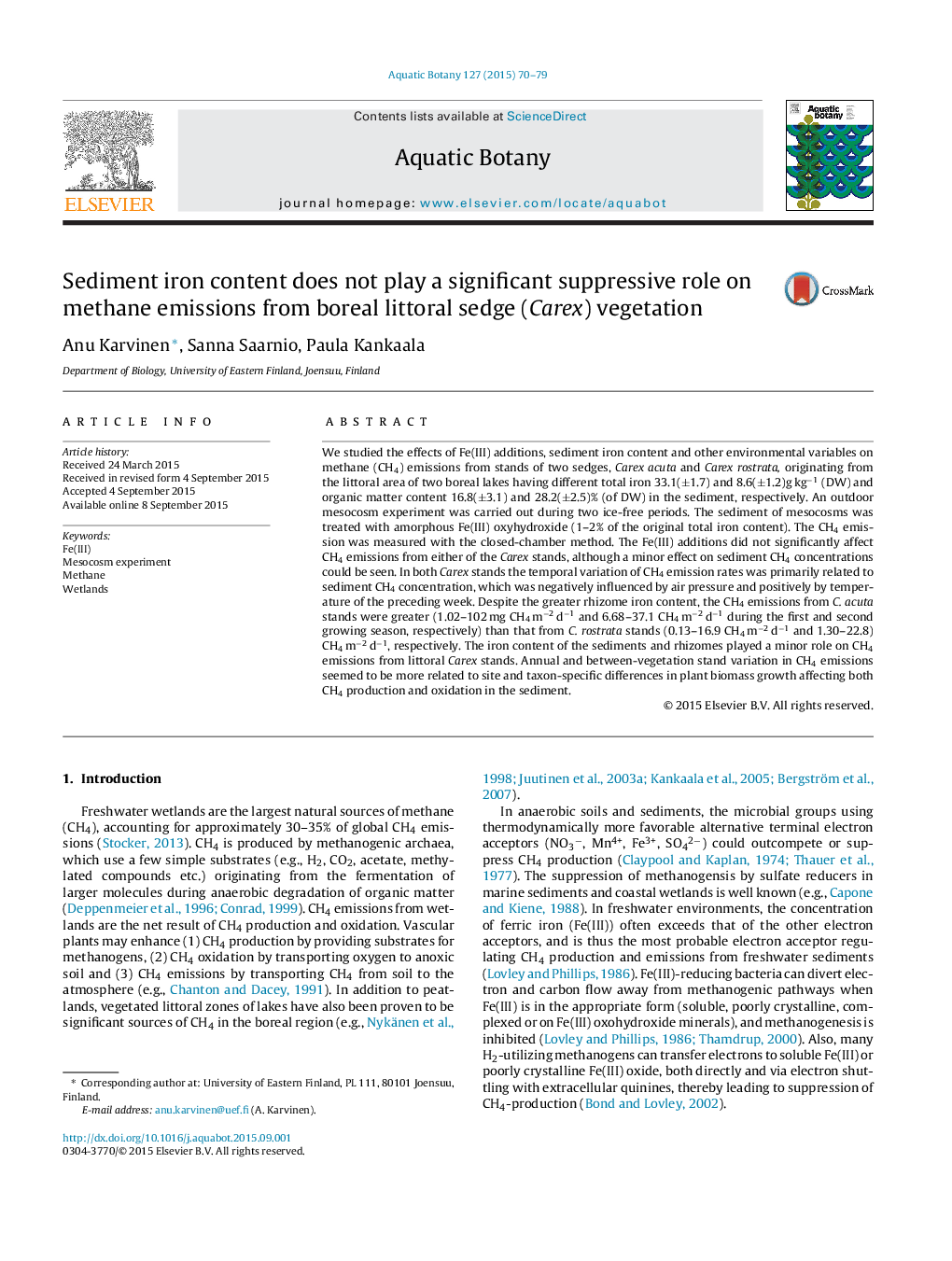| Article ID | Journal | Published Year | Pages | File Type |
|---|---|---|---|---|
| 6381718 | Aquatic Botany | 2015 | 10 Pages |
Abstract
We studied the effects of Fe(III) additions, sediment iron content and other environmental variables on methane (CH4) emissions from stands of two sedges, Carex acuta and Carex rostrata, originating from the littoral area of two boreal lakes having different total iron 33.1(±1.7) and 8.6(±1.2)g kgâ1 (DW) and organic matter content 16.8(±3.1) and 28.2(±2.5)% (of DW) in the sediment, respectively. An outdoor mesocosm experiment was carried out during two ice-free periods. The sediment of mesocosms was treated with amorphous Fe(III) oxyhydroxide (1-2% of the original total iron content). The CH4 emission was measured with the closed-chamber method. The Fe(III) additions did not significantly affect CH4 emissions from either of the Carex stands, although a minor effect on sediment CH4 concentrations could be seen. In both Carex stands the temporal variation of CH4 emission rates was primarily related to sediment CH4 concentration, which was negatively influenced by air pressure and positively by temperature of the preceding week. Despite the greater rhizome iron content, the CH4 emissions from C. acuta stands were greater (1.02-102 mg CH4 mâ2 dâ1 and 6.68-37.1 CH4 mâ2 dâ1 during the first and second growing season, respectively) than that from C. rostrata stands (0.13-16.9 CH4 mâ2 dâ1 and 1.30-22.8) CH4 mâ2 dâ1, respectively. The iron content of the sediments and rhizomes played a minor role on CH4 emissions from littoral Carex stands. Annual and between-vegetation stand variation in CH4 emissions seemed to be more related to site and taxon-specific differences in plant biomass growth affecting both CH4 production and oxidation in the sediment.
Related Topics
Life Sciences
Agricultural and Biological Sciences
Aquatic Science
Authors
Anu Karvinen, Sanna Saarnio, Paula Kankaala,
